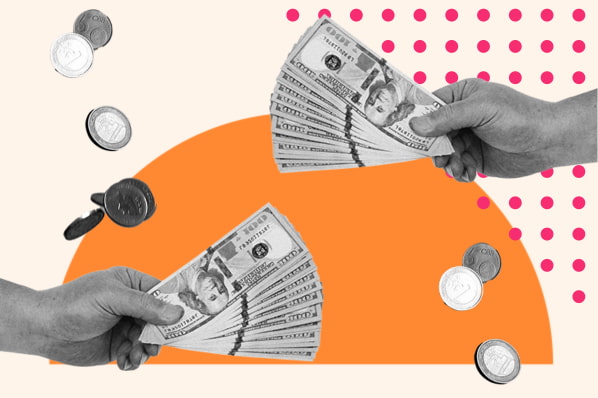But when it comes to things like your teeth, or the buying habits of your customers, you’ll want to address sensitivity head-on. If even the slightest change in price causes your customers to go running towards your competitors, chances are you’re experiencing high price sensitivity. Here, we’ll discuss what price sensitivity is, and what factors contribute to it.
Essentially, price sensitivity determines how easily your customers are swayed from buying your product if you increase your prices. Let’s discuss how to better understand price sensitivity.
Price Sensitivity Analysis
The first step to understanding price sensitivity is identifying price elasticity of your product. Price elasticity is a measurement used by economists to measure how price changes impact the supply and demand of a product.
If a product is inelastic, meaning customers will continue to buy it regardless of changes in price, it tends to have low price sensitivity. Conversely, if a product is elastic, meaning a price change has triggered a decrease in demand, it has high price sensitivity.
For example, gasoline is a commodity that would be considered inelastic, therefore having low price sensitivity. Though its prices fluctuate greatly depending on political and economic factors, it is an essential item for people who rely on driving as their main form of transportation. As long as people drive cars that rely on gasoline for power, they will continue purchasing it regardless of price.
Goods that could be considered nonessential, or that are in highly competitive markets are more likely to have elastic demand. Though essential, food products tend to have elastic demand. Because there are so many types of food options available at different price points, if the price surpasses the amount the customer is willing to pay, the buyer has different options to choose from to sustain themselves.
Need help calculating price elasticity of demand? This post has you covered. And for an even easier option, you can use this calculator.
Now that you understand what price sensitivity is, let's discuss some of the factors that can influence it.
1. Price Anchoring
In the context of a negotiation, participants tend to be heavily influenced by the first price they hear — also known as anchoring bias. When making a purchasing decision, buyers follow similar tendencies and tend to use the initial price they see as a reference point for what they are willing to pay for a specific product.
As an example, let’s say a single company has cornered the market for wireless computer mice and they sell their signature mouse for $65. When they go to launch a new version of their computer mouse priced at $70, the customer will feel like they are getting a “deal” because the amount is so close to the anchor price.
2. Onboarding and Switching Costs
Some purchasing decisions can come with additional costs and considerations known as switching costs. A switching cost is the financial, emotional, energy, or time-based cost a customer pays when switching to a different product. From a monetary standpoint, some companies charge extra to migrate or onboard new customers.
For example, when purchasing from a SaaS company, B2B buyers need to factor financial onboarding costs associated with using a new piece of software into their budget during the decision-making process. They also need to consider the time and resources they need to spend preparing their team to use a new piece of software and how that can impact their productivity and bottom line.
When a company has a high switching cost, they may be more likely to keep their current customers, because the costs associated with switching to another brand or product discourages customers from switching to a competitor. In this case, a company with a high switching cost may have lower price sensitivity, because their customers are more likely to stay put.
3. Competition
The competitive landscape of a product or industry can be a major factor in influencing price sensitivity. When a product can be directly substituted for another brand without impacting quality or ease of use, customers may be willing to go with the cheapest product because they know they are likely to achieve the same result.
Brands that are able to differentiate themselves and hone in on the specific benefits their product offers the customer are more likely to withstand price sensitivity.
4. Perceived Value
How much do customers value your product? The answer to this question lies in the perceived value of your product and brand. While a product may have many competitors of various price points, having a strong brand and high perceived value can impact the price sensitivity a company experiences.
For example, a blender brand such as Vitamix has a solid reputation for creating top-of-the-line blenders that perform well and last for a long time. The quality and durability is not easily substituted for lower-end blenders. If someone is willing to buy a high-end blender and the perceived value of a Vitamix is important to them, they are less likely to be deterred by price fluctuations.
5. Product or Service Type
Price sensitivity can also vary greatly depending on the type of product or service being offered. Earlier in the piece, I shared an example of how gasoline is a commodity that is less likely to be impacted by price sensitivity because it is a necessity for people who rely on gasoline-powered cars for transportation.
On the other hand, products that are seen as being less essential or that are easily substituted can be heavily impacted by price sensitivity. For example, a local gym may have high price sensitivity because it has various substitutions including other local gyms, home workout options, and free fitness content online. So if a gym tries to drastically increase its dues in an area where members have other options, they may be subject to price sensitivity negatively impacting their business.
Conversely, a product such as the Peloton bike has fewer substitutions that offer the same level of convenience and community. Combined with the high perceived value of the product, Peloton would be less likely to experience price sensitivity than a local gym.
6. Customer Income
The income level of your ideal customer can provide valuable insight into your company’s price sensitivity. Products that are aimed towards customers with lower income could have higher price sensitivity because those buyers have to stretch their dollars further — and an increase in price for any goods or services could make or break their decision to purchase.
Products that are aimed at selling to customers with more discretionary income may be less price sensitive because those customers are not having to stretch their dollars as far. If they are buying for quality, brand name, or perceived value, price changes alone may not deter them from buying.
7. Economic Landscape
Related to customer income, the overall economic landscape can be a major influence in price sensitivity. During an economic downturn, buyers across income levels are more likely to pay more attention to price, and are less willing to pay for extras.
In addition to economic factors, global events also impact buying habits. As a result of the COVID-19 pandemic, purchasing habits shifted greatly to focus on eCommerce in the U.S. was up more than 30%, while retail sales took a plunge. Jewelry and clothing were among the items people purchased less of in 2020. As consumer habits continue to shift, the price sensitivity of goods and industries will as well.
As you continue refining your price strategy to be equally beneficial for your customers and your bottom line, consider using the strategies in this post.
Pricing Strategy
.png?width=112&height=112&name=Image%20Hackathon%20%E2%80%93%20Vertical%20(45).png)
.jpg)







![Price Skimming: All You Need To Know [+ Pricing Calculator]](https://53.fs1.hubspotusercontent-na1.net/hubfs/53/price-skimming-strategy.jpg)

.jpg)
![B2B Pricing Models & Strategies [+ Pros and Cons of Each]](https://53.fs1.hubspotusercontent-na1.net/hubfs/53/b2b-pricing-models-and-strategies.jpg)